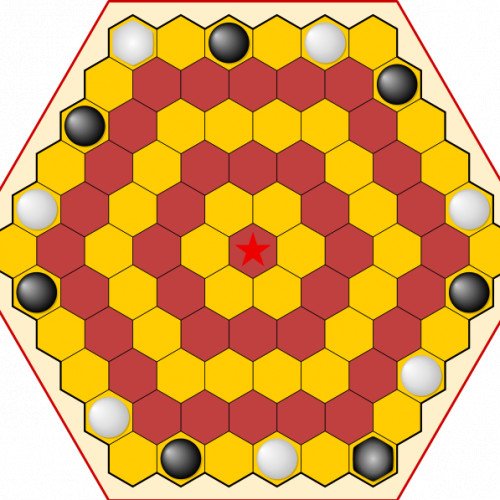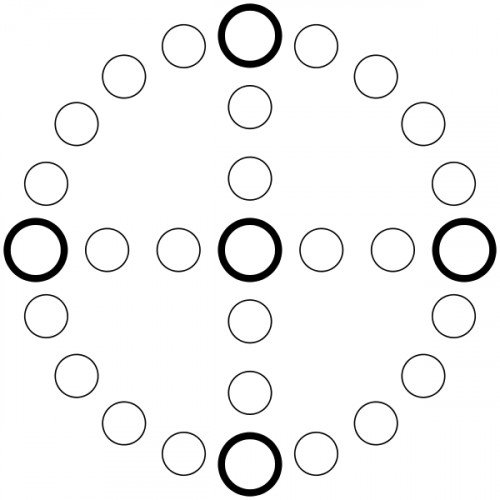AGON VS CROSS AND CIRCLE GAME

AGON
Agon (or Queen's Guards or Royal Guards) is an strategy game invented by Anthony Peacock of London, and first published in 1842. It is a two player game played on a 6×6×6 hexagonal gameboard, and is notable for being the oldest known board game played on a board of hexagonal cells. Each player has one queen and six guards. Players determine who moves first, then turns alternate. On each turn, a player moves one of his pieces. The object of the game is to be first to maneuver one's queen to the central hex (the throne) at the center of the board, and surround her with all six of her guards. The gameboard may be thought of as a series of concentric rings of hex cells (highlighted by rings of alternating colors). Pieces move one step at a time to an adjacent cell, either sideways in the same ring, or towards the throne to the next ring. The cell moved to must be vacant. Only the queen may move to the throne.
Statistics for this Xoptio

CROSS AND CIRCLE GAME
Cross and circle is a board game design used for race games played throughout the world. The basic design comprises a circle divided into four equal portions by a cross inscribed inside it like four spokes in a wheel; the classic example of this design is Yut. However, the term "cross and circle game" is also applied to boards that replace the circle with a square, and cruciform boards that collapse the circle onto the cross; all three types are topologically equivalent. Ludo and Parcheesi (both descendants of Pachisi) are examples of frequently played cruciform games. The category may also be expanded to include circular or square boards without a cross which are nevertheless quartered (Zohn Ahl), and boards that have more than four spokes (Aggravation, Trivial Pursuit). The game board for the Aztec game Patolli consists of a collapsed circle without an interior cross and thus has the distinction of being a cross that is a circle (topologically), without being a cross plus circle. Tokens are moved around spaces drawn on the circle and on the cross, with the goal of being the first player to move all tokens all the way around the board. Generally the circle of the cross and circle forms the primary circuit followed by the players' pieces. The function of the cross is more variable; for example, in Yut the cross forms shortcuts to the finish, whereas in Pachisi the four spokes are used as player-specific exits and entrances to the pieces' home. In non-race games (like Coppit and Trivial Pursuit) all paths may be undifferentiated in function.